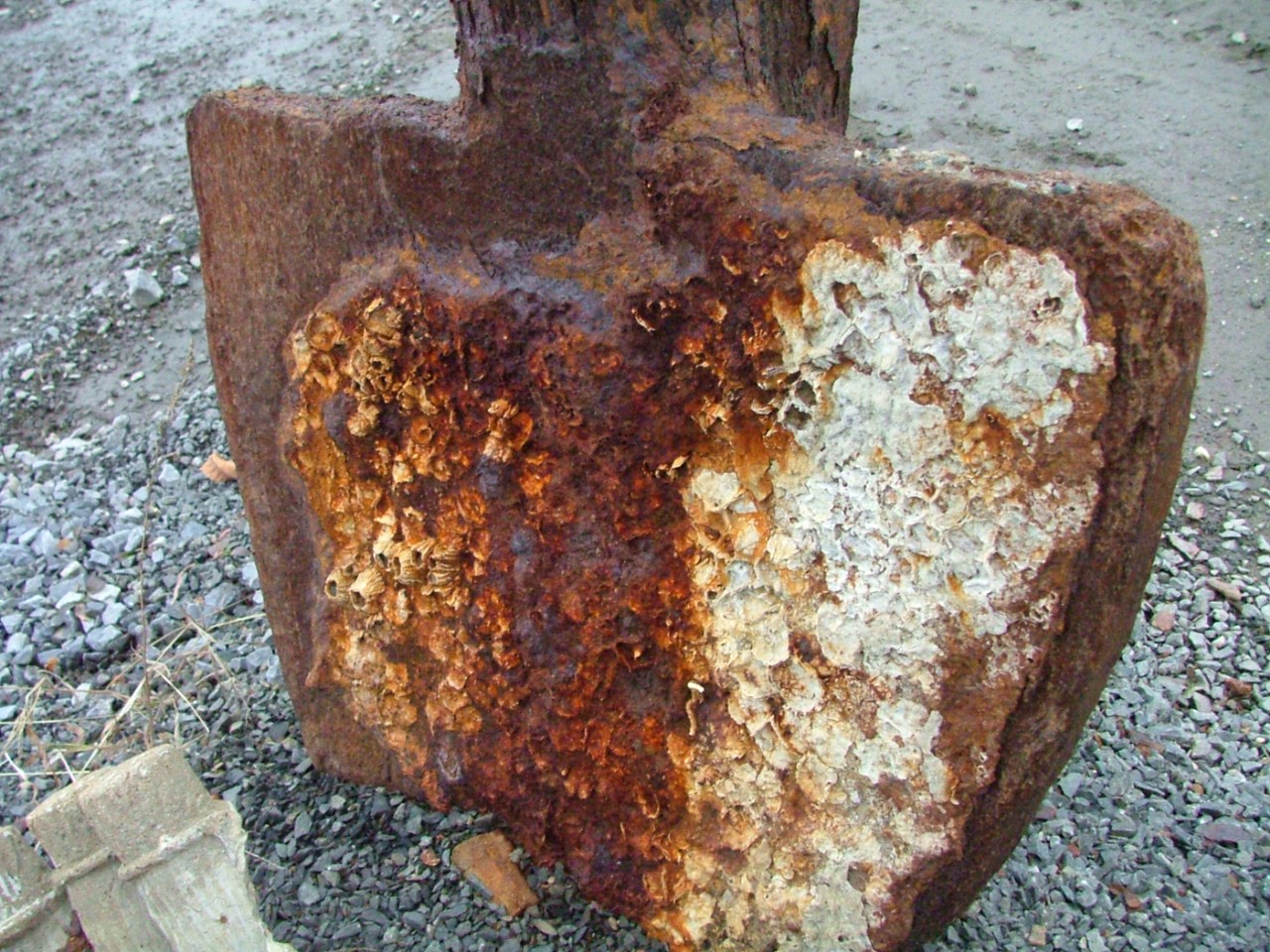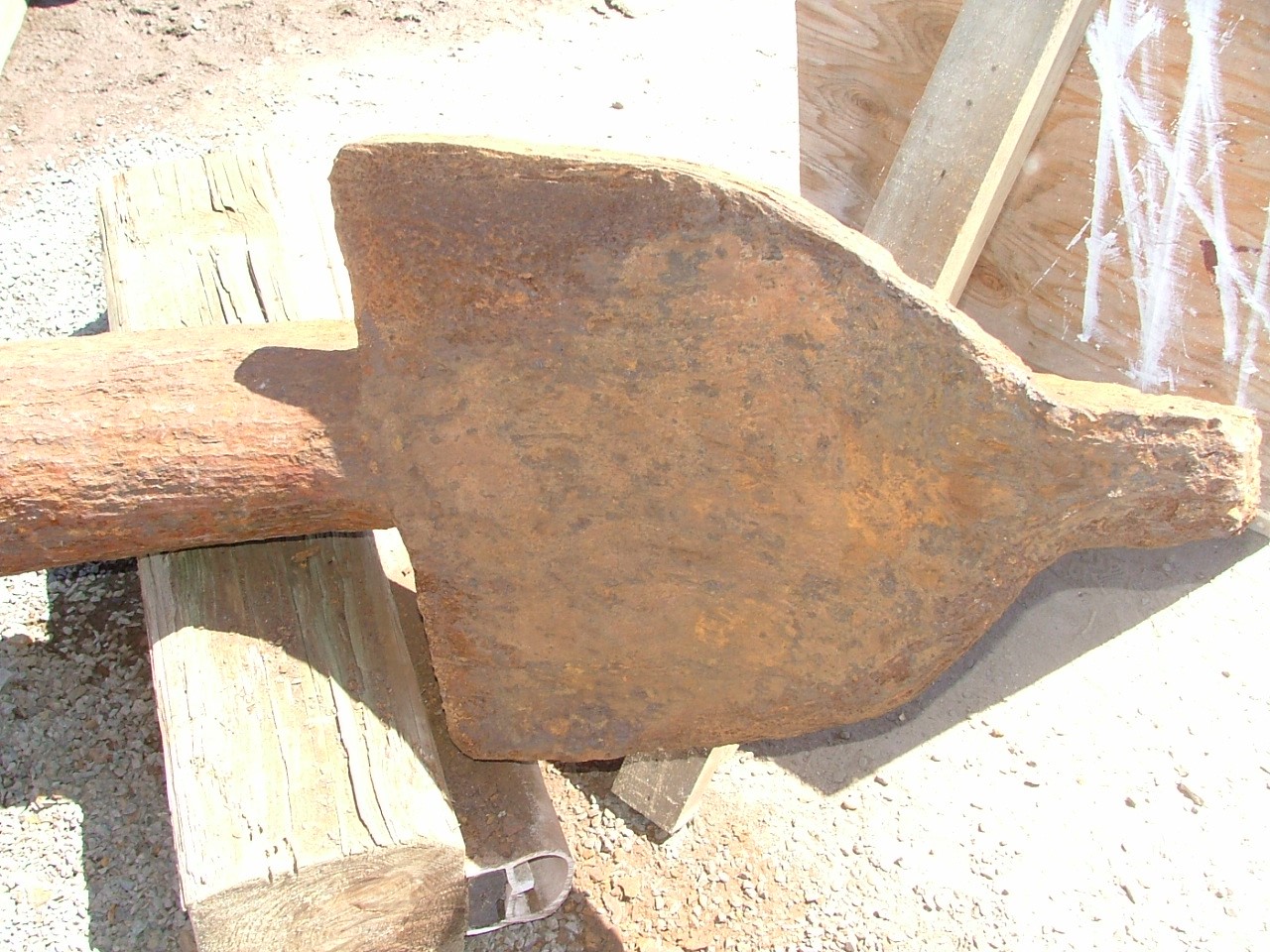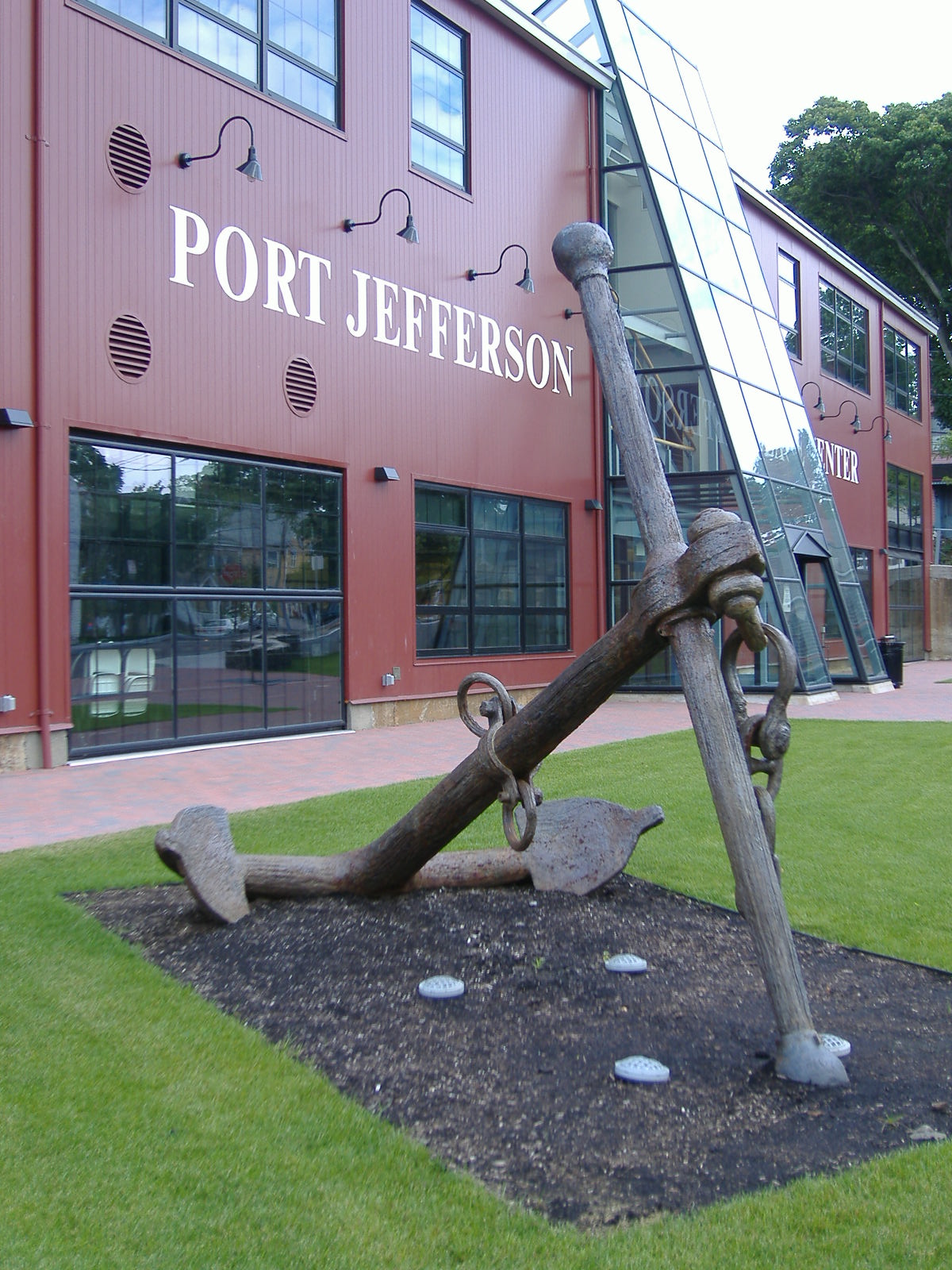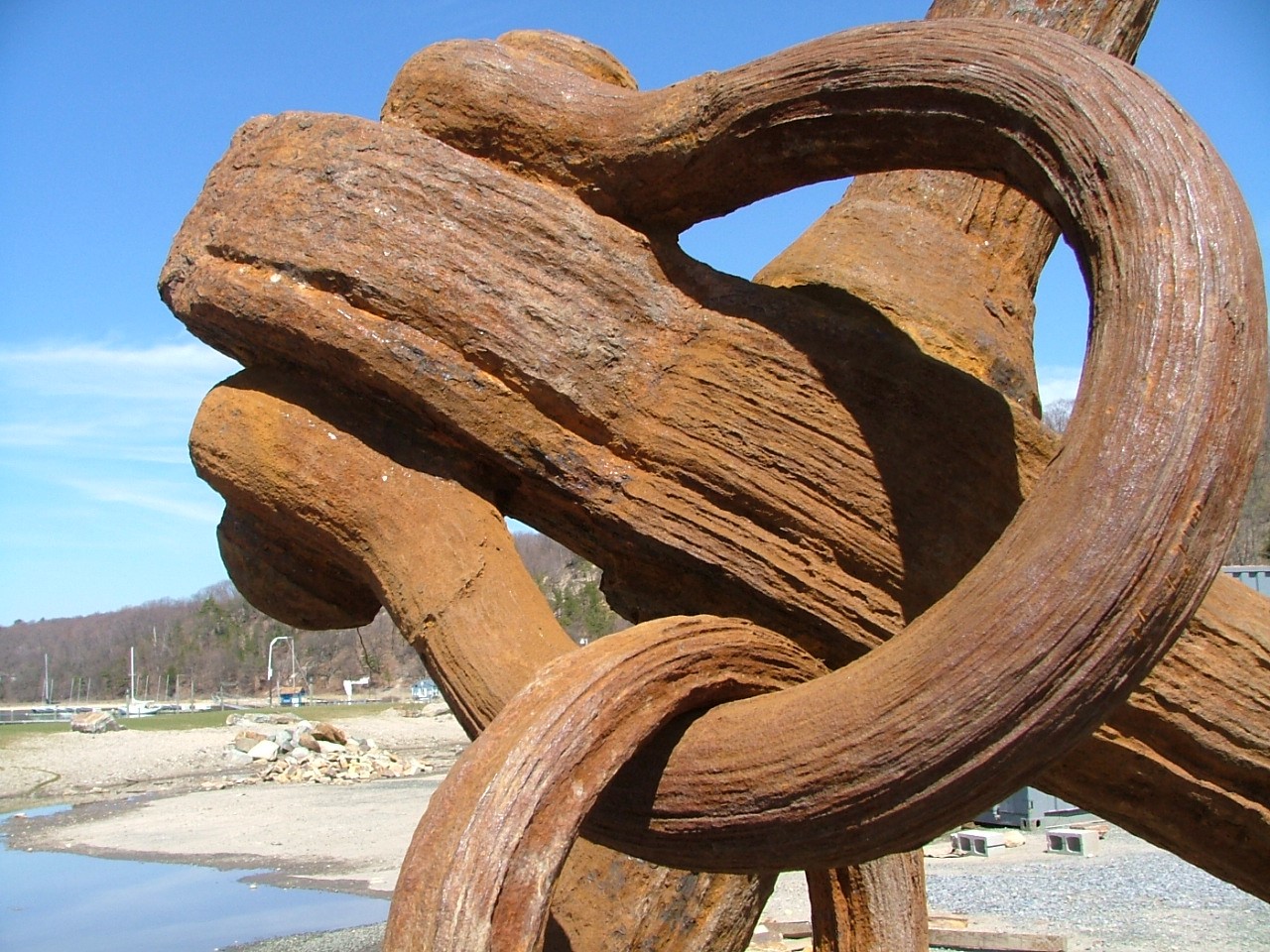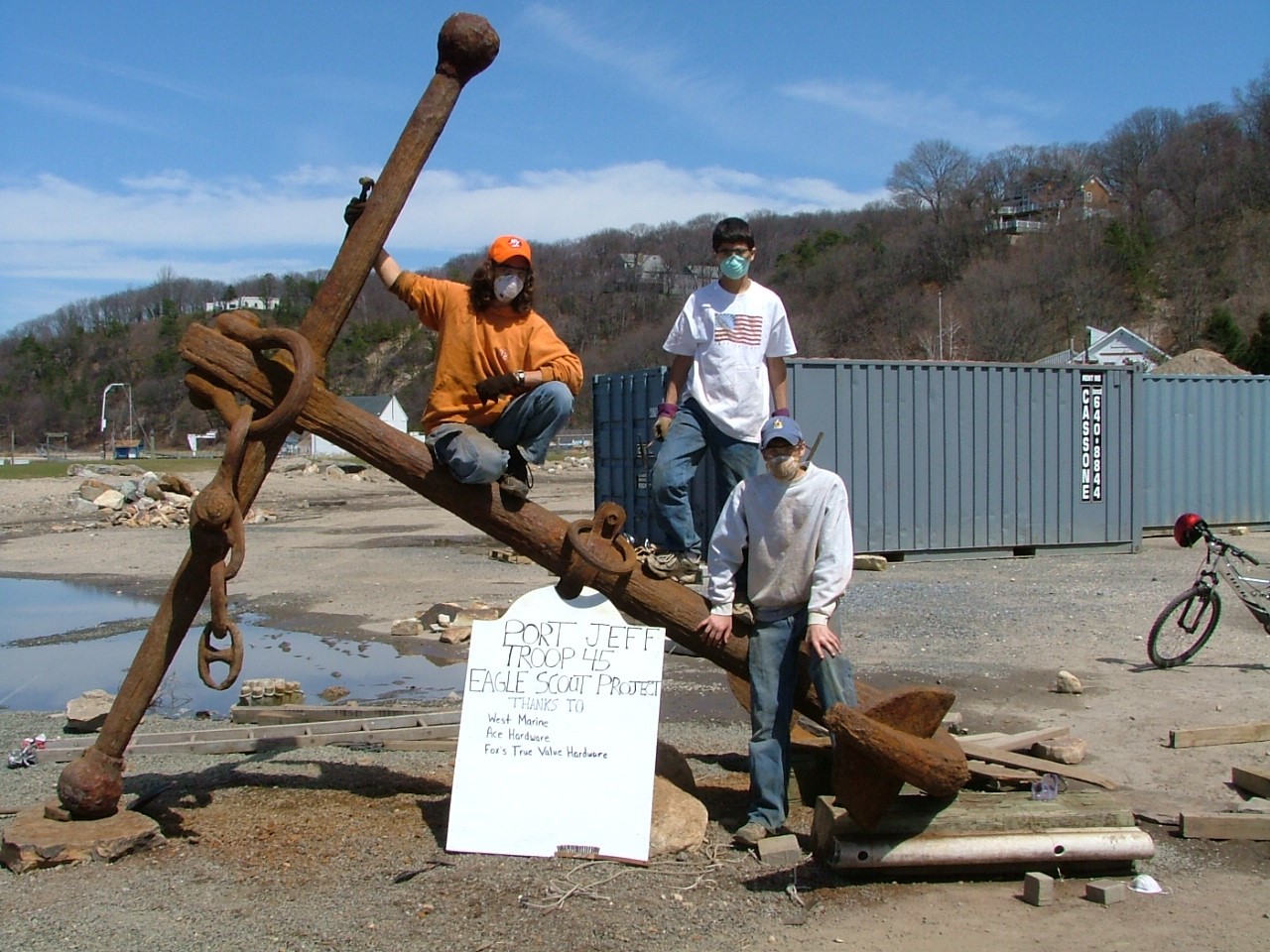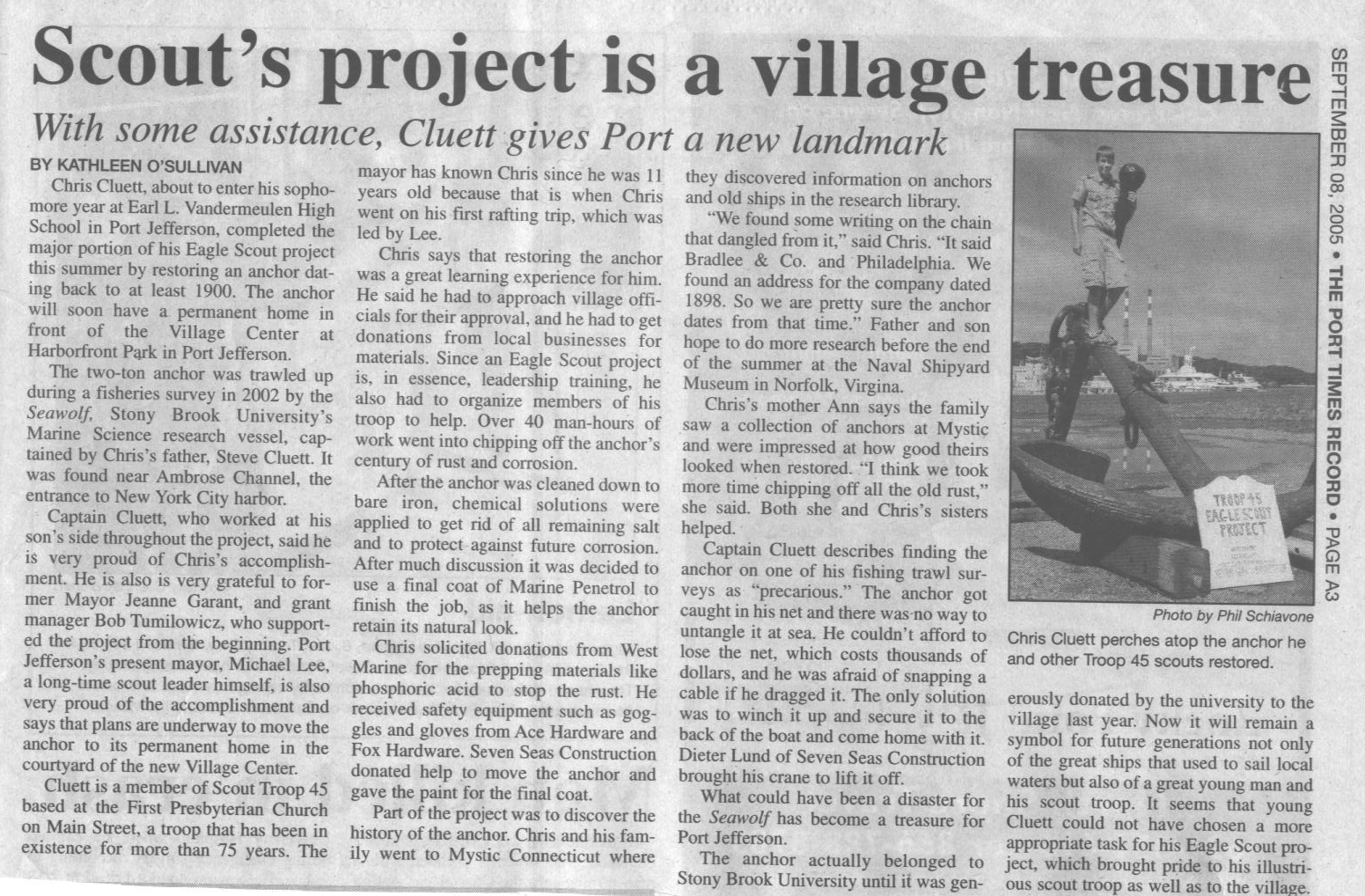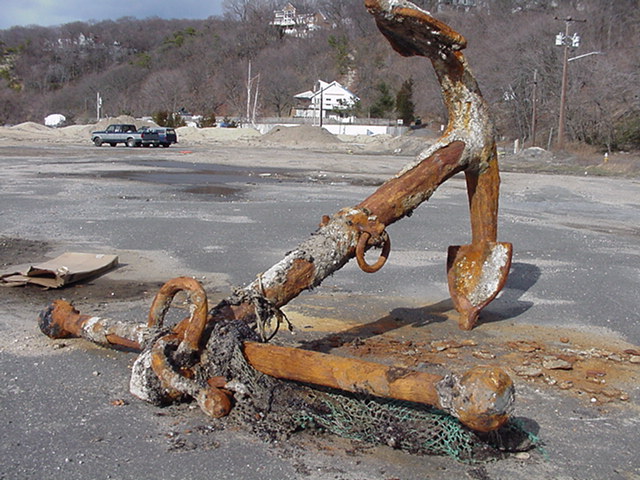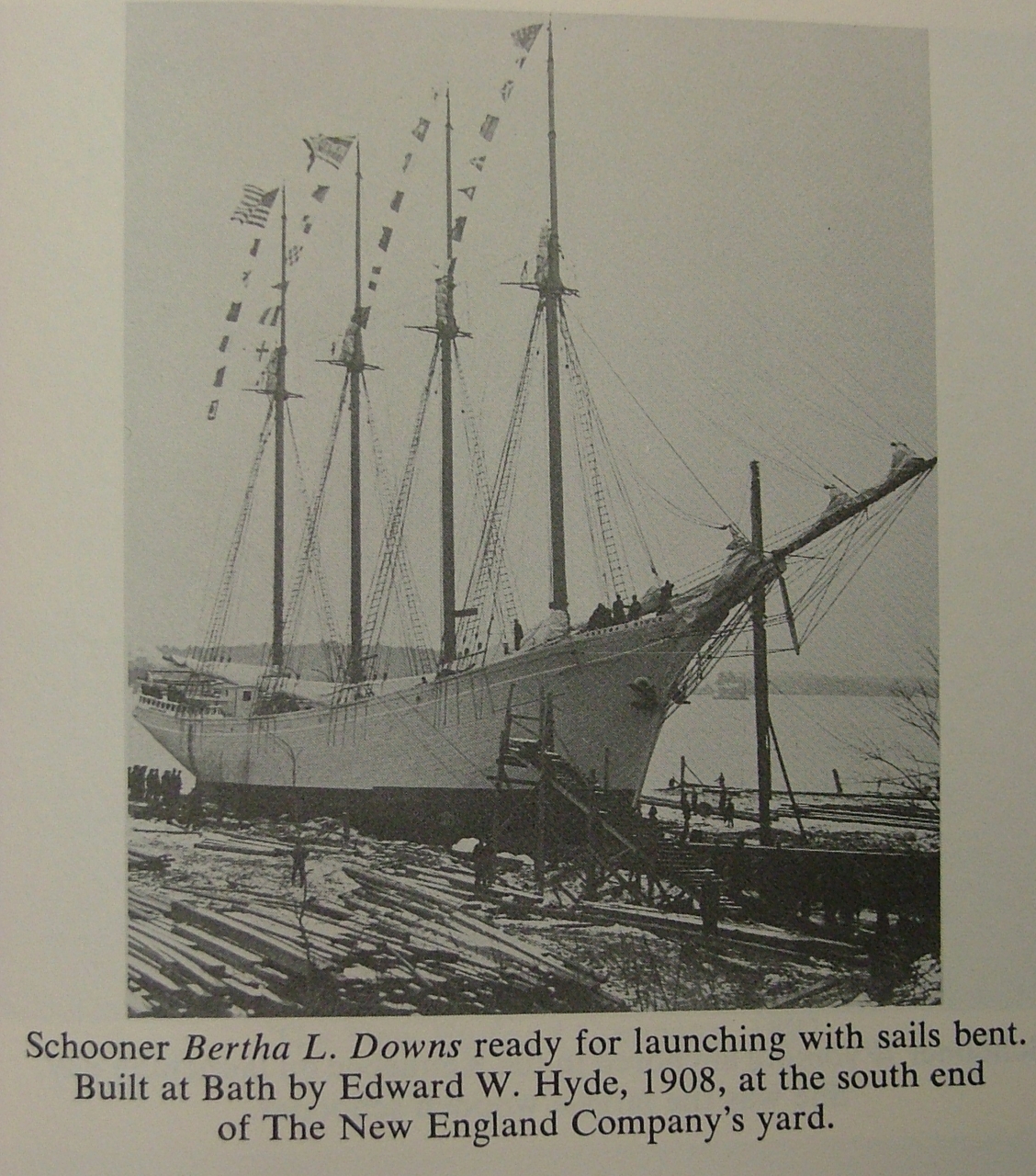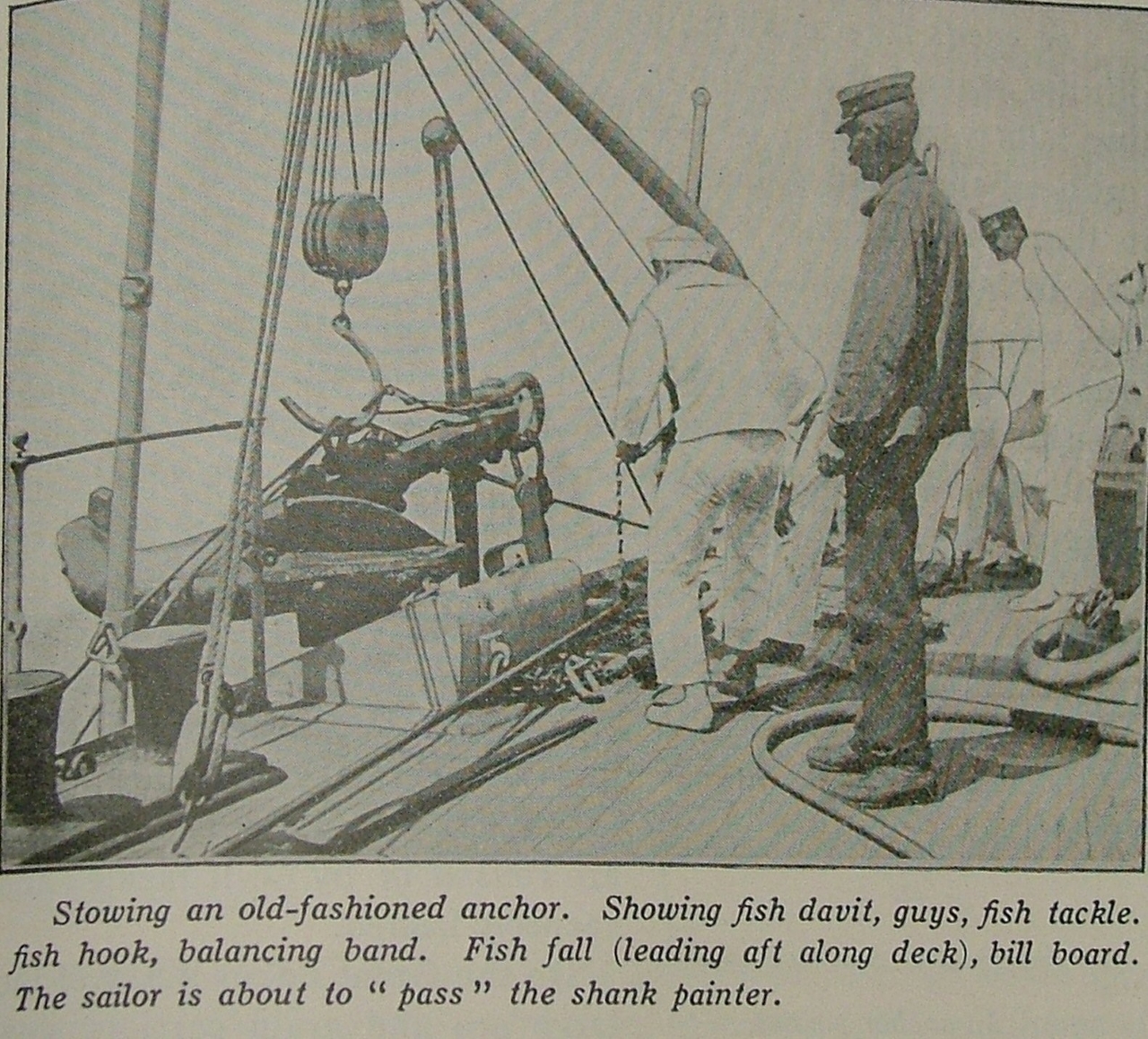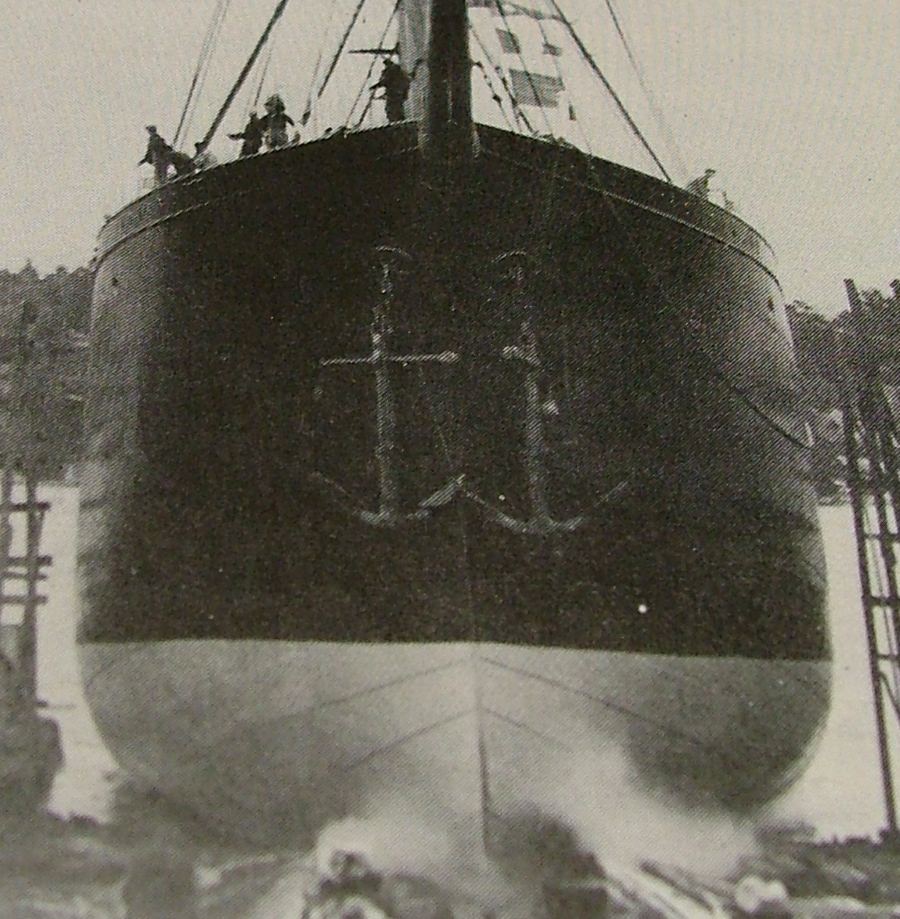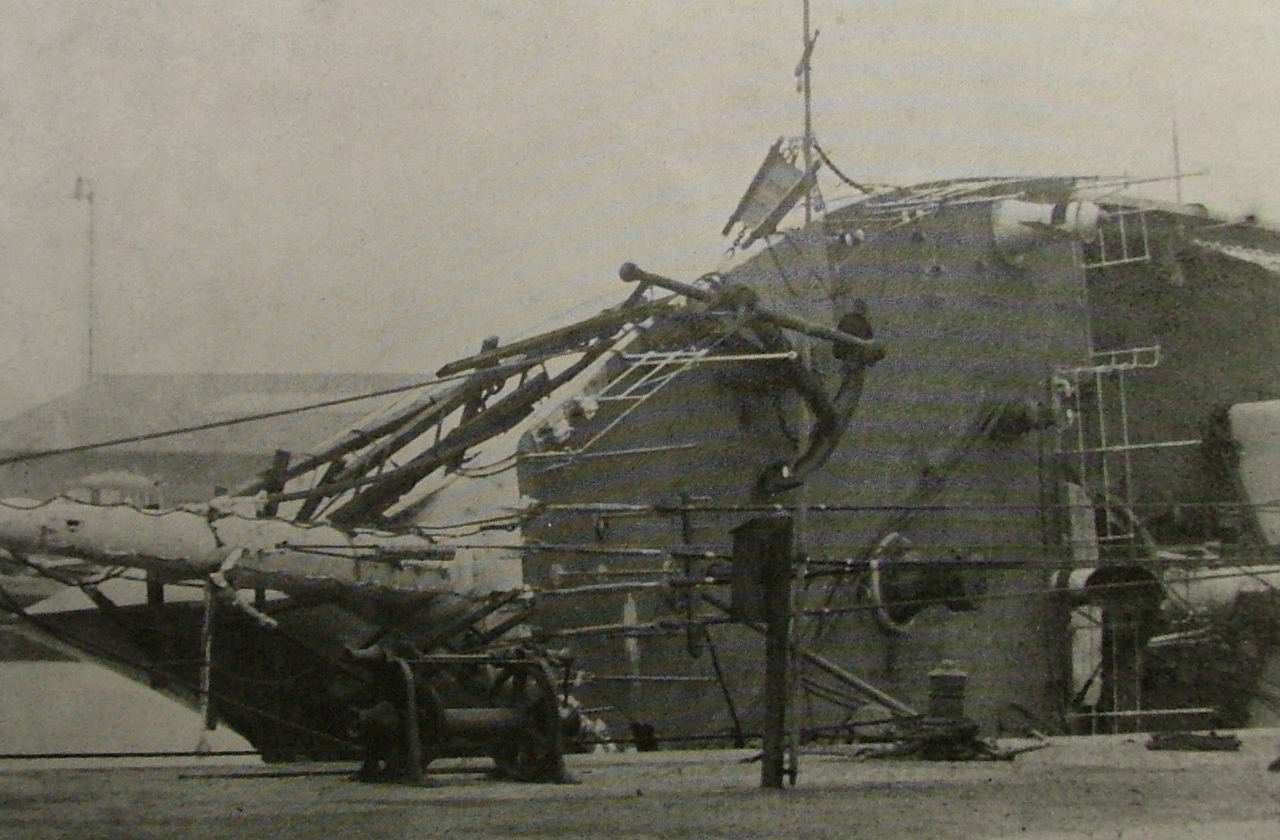Have you seen the anchor at Harborfront Park in the Village of Port Jefferson , NY? The R/V Seawolf, flagship of the Marine Sciences Research Center, with Captain Steve Cluett at the wheel, “caught” the anchor on the last tow of the first trawl trip for the New Jersey Dept of Envir. Protection Division of Fish and Wildlife. The NJ DEP has been one of the longest supporters of the R/V Seawolf. The anchor was known to those familiar with the area, however it was not clear on the chart provided to the R/V Seawolf that the lines indicated areas to avoid rather than navigate.
Captain Cluett, with crew Mark Wiggins, Angie Parlatore and Dick Furbush, pulled the anchor up with their nets, revealing the captured netting from previous anchor encounters.
Steve Cluett’s son, Chris, restored the anchor as part of an Eagle Scout project. Chris was able to date the approximate age of the anchor (1890-1910) because the foundry’s name is still on the cast iron stud link chain studs, and Bryn Mawr College maintained the Philadelphia business records to date the foundry.
The anchor was gifted by Captain Cluett to Jeanne Garant, then-Mayor of Port Jefferson Village. The full story of Chris Cluett’s restoration of the anchor, covered by Kathleen O’Sullivan of the Port Times Record, is below.
From Scout’s project to a village treasure
With some assistance, Cluett gives Port a new landmark
BY KATHLEEN O’SULLIVAN
Chris Cluett. about to enter his sophomore year at Earl L. Vandermeulen High School in Port Jefferson, completed the major portion of his Eagle Scout project this summer by restoring an anchor dating back to at least 1900. The anchor will soon have a permanent home in front of the Village Center at Harborfront Park in Port Jefferson.
The two-ton anchor was trawled up during a fisheries survey in 2002 by the Seawolf, Stony Brook University’s Marine Science research vessel, captained by Chris’s father, Steve Cluett. It was found near Ambrose Channel, the entrance to New York City harbor.
Captain Cluett, who worked at his son’s side throughout the project, said he is very proud of Chris’s accomplishment. He is also is very grateful to former Mayor Jeanne Garant, and grant manager Bob Thmilowicz. who supported the project from the beginning. Port Jefferson’s present mayor, MichaeI Lee, a long-time scout leader himself. is also very proud of the accomplishment and says that plans are underway to move the anchor to its permananent home in the courtyard of the new Village Center.
Cluett is a member of Scout Troop 45 based at the First Presbyterian Church on Main Street, a troop that has been in existence for more than 75 years. The mayor has known Chris since he was II years old because that is when Chris went on his first rafting trip. which was led by Lee.
Chris says that restoring the anchor was a great learning experience for him. He said he had to approach village officials for their approval, and he had to get donations from local businesses for materials. Since an Eagle Scout project is, in essence. leadership training, he also had to organize members of his troop to help. Over 40 man-hours of work went into chipping off the anchor’s century of rust and corrosion.
After the anchor was cleaned down to bare iron, chemical Solutions were applied to get rid of all remaining salt and to protect against future corrosion. After much discussion it was decided to use a final coat of Marine Penetrol to finish the job. as it helps the anchor retain its natural look.
Chris solicited donations from West Marine for the prepping materials like phosphoric acid to stop the rust. He received safety equipment such as goggles and gloves from Ace Hardware and Fox Hardware. Seven Seas Construction donated help to move the anchor and gave the paint for the final coat.
Part of the project was to discover the history of the anchor. Chris and his family went to Mystic, Connecticut where they discovered information on anchors and old ships in the research library.
“We found some writing on the chain that dangled from it,” said Chris. “It said Bradlee & Co. and Philadelphia. We found an address for the company dated 1898. So we are pretty sure the anchor dates from that time.” Father and son hope to do more research before the end of the summer at the Naval Shipyard Museum in Norfolk. Virginia.
Chris’s mother Ann says the family saw a collection of anchors at Mystic and were Impressed at how good theirs looked when restored. “I think we took more time chipping off all the old rust,” she said. Both she and Chris’s sisters helped.
Captain Cluett describes finding the anchor on one of his fishing trawl surveys as “precarious,” The anchor got caught in his net and there was no way to untangle it at sea. He couldn’t afford to lose the net, which costs thousands of dollars, and he was afraid of snapping a cable if he dragged it. The only solution was to winch it up and secure it to the back of the boat and come home with it. Dieter Lund of Seven Seas Construction brought his crane to lift it off.
What could have been a disaster for the Seawolf has become a treasure for Port Jefferson.
The anchor actually belonged to Stony Brook University until it was generously donated by the university to the village last year. Now it will remain a symbol for future generations not only of the great ships that used to sail local waters but also of a great young man and his scout troop, It seems that young Cluett could not have chosen a more appropriate task for his Eagle Scout project, which brought pride to his illustrious scout troop as well as to the village.
Above: Anchor surface during restoration, after chipping, prior to chemical treaments.
Above: Boy Scout Troop 45 chipping crew
Above: Pressure washing anchor with salt removal solution.






